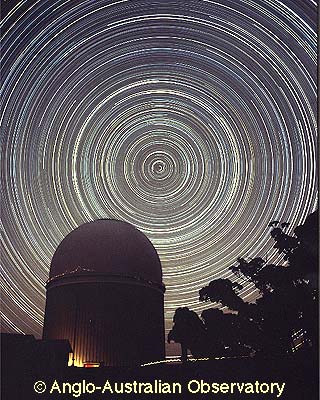With CCD imagery grabbing a foothold in all aspects
of amateur photography, it seems moot to discuss
film. I tend to agree - there serves no purpose to
discuss film in astrophotography since even this
hobby has be assimilated to use computer technology.
The benefits of using
CCD's over film are just too
great, but there is a certain nostalgia when
thinking about film - and to understand photography
to its fullest, learning about film is required (in
my opinion).Film, in its most basic form, is
simply the formation of Silver Halide crystals
residing on a gelatin base. While the gelatin serves
no purpose other than to "hold" the image, the
Silver Halide crystals provide the magic. These
crystals respond to light so that development
(chemicals designed to stop the reaction of silver
halide to light) locks in the crystals change to
light. The result is a culmination of thousands of
crystals of various "color" resulting in an overall
image. The idea is fascinating but really simple.
Color photography uses died crystals that respond
to whatever wavelength to which they correspond, but
the idea is the same. Chemicals are used to
extract the final image.
Almost immediately it is evident that several
problems exist:
- crystalline structure of each film will not
be exact
- Chemicals used to extract images are mixed,
and variations occur
As such, photography obviously more artistic than
exact since every step of photography is not
precise: crystal count can vary, percentages of
chemicals vary, temperatures of the chemicals can
vary, light exposure to the film can vary, and so
on...
But dealing with that variability is what
separates a professional from an amateur. Experience
in chemical use, exposure techniques, film bias, and
so on greatly affects the outcome of the image.
Patience...
To understand film photography in Astronomy,
nothing is better than Michael Covington's book
Astrophotography for the Amateur (see the
reference
section) - this book is also good for understanding
film in general.
Of the one area of astrophotography does film
reign supreme is the capture of star trails:

This image is taken with a 35mm SLR
(Single Lens Reflex) camera in a stationary position
with the shutter open for an extended period of
time.
One of films disadvantage allows for
this dramatic image to be captured - that is because
film is NOT linear, the overall image does not
saturate. The term for this is called reciprocity
failure and means that the longer film is
exposed, the less sensitive it becomes.
Back to Top |

